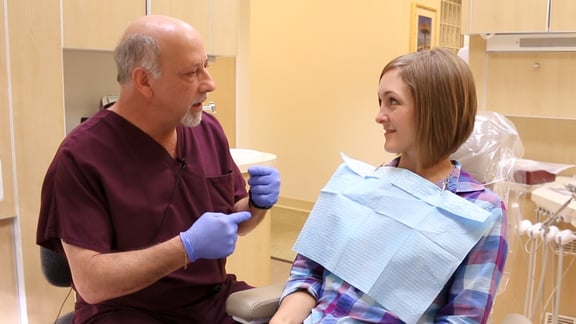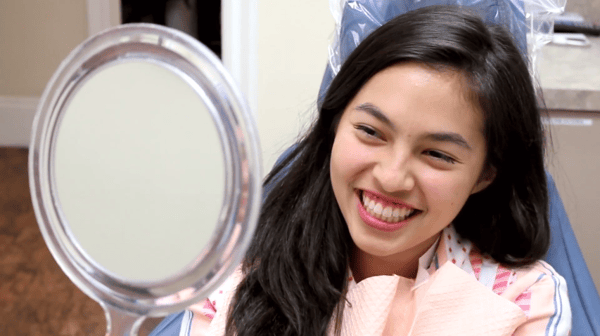Planning and treating your first orthodontic case can be a daunting task. With so many stages and procedures involved, it can be hard to know where to begin. But don't fret, we break down the process, step by step.
When you summarize the essence of orthodontics, you’ll find that there are just 3 parts: pre-treatment, treatment, and post-treatment. When you break that down, there are 9 essential steps you will see in every orthodontic case.
Providing quality orthodontic care can be easy for dentists. With the right knowledge, support and tools, any dentist can start helping their orthodontic patients. Check out this 9-part guide to kick-start your first orthodontic case.
Diagnosis (pre-treatment)

Starting your case with a solid diagnosis is vital to having an efficient and stress-free orthodontic process. Putting in the time up front to properly evaluate and communicate with patients sets you up for success. While some dentists and orthodontists do a quick, 10 minute diagnosis, we’ve seen this create issues that could have been easily avoided. We recommend a full orthodontic diagnosis to be completely prepared.
Screening with 1st Consultation
This is when you first seriously discuss orthodontics with your patient to evaluate their needs and desires. You and your assistant can evaluate various factors like previous history, how the patient is classified, and what they may want to improve about their smiles. Read more about this stage and view the Orthodontic Screening Checklist.
After evaluation, address any patient questions and discuss possible treatment approaches. Want to prepare for these questions? Read article: How to Answer the 4 Most Common Patient Questions About Orthodontics
At the end of the consultation, let the patient know that you will need to take records to move on to the next step.
Take Records
We say this a lot, but since it’s important we will say it again and again: take good records. By properly documenting your ortho cases, you protect yourself and get the most accurate information to help you and your patients make the best treatment decisions.
Before you start treatment, you should always have intraoral and extraoral photos, white stone models (or a digital version), and panoramic and lateral cephalometric x-rays. Be sure that your records are always high quality and focused properly. Learn how to take great photo records in this video.
Process Records
Analyze your records. Oftentimes this process confirms your initial screening. But it can also uncover unexpected details like skeletal asymmetry, impacted teeth, bone loss, or short roots. Identifying these aspects can help you keep your treatment on schedule as you can address any issues early on.
Do a cephalometric analysis to see what skeletal and dental features you’re working with. You also need to do a facial analysis, and maybe even a mixed dentition analysis (depending on the patient’s age). While you can do your tracings and calculations by hand, most doctors now use computer software to speed up the process and have prediction visuals.
Plan Treatment
After seeing your analysis, compare treatment options, make your treatment decision, detail your treatment plan, and design your appliance. While some dentists and orthodontists skip this step, we encourage you to plan your case before treatment so that you are proactive, not reactive in front of the patient. You should decide if you need to extract teeth before bracketing the patient, as this makes it easier for you and gives your patient confidence if you tell them up front.
Luckily, orthodontic diagnostic software now makes treatment planning much easier. Read about how SmileStream can help you navigate the orthodontic treatment process.
Recommend Treatment in 2nd Consultation
Present your treatment recommendation (including the alternatives considered, the orthodontic fee and estimated time of treatment). It can be helpful to print out a patient report to help you convey the reason that you’ve decided on that treatment and why you’re the best doctor to treat them. When they confirm, have your patient sign the contract and informed consent and collect your down payment or first installment.
Treatment

Your orthodontic treatment will be the bulk of time that your patient is in your office. Your staff can help you tremendously with this phase of orthodontics. If you set yourself up well in the diagnosis phase, the treatment phase should go smoothly, where you follow your treatment plan and make adjustments as needed.
Level and Alignment
At this stage, you are looking to level the arches and align the teeth. First you align, then you level.
You will place separators, cement bands, and bond your brackets. You will be using light, round wires like a .012 NiTi wire. The goal of this phase is to make all teeth straight, eliminating all rotations and correcting root angulations.
When the teeth are aligned and all rotations are fully corrected, you’ll start leveling and going through wire progression. You’re likely to replace your round wire with rectangular wires of increasing width (like an 18x25 NiTi wire) to establish torque and level the curve of spee.
Mechanics
When the teeth are aligned and leveled, you enter the mechanics phase, moving the teeth to the correct and final position. As you continue wire progression you are likely to replace your 18x25 NiTi rectangular wire with a stiffer stainless steel wire (like a 19x25 size) to be able to move teeth with little or no tipping.
Finishing
Make minor adjustments to fix bracket positioning errors. Many times this can include wire bending or repositioning brackets. Ensure the case has settled before you deband.
 Don’t use the word “finishing” in front of the patient. Using the word finishing makes the patient believe that you are almost done with the treatment. They will expect you to remove the brackets right away. Since finishing a case properly may take up to 3 months, don’t use the word finishing, use DETAILING instead.
Don’t use the word “finishing” in front of the patient. Using the word finishing makes the patient believe that you are almost done with the treatment. They will expect you to remove the brackets right away. Since finishing a case properly may take up to 3 months, don’t use the word finishing, use DETAILING instead.
Retention (post-treatment)

After debonding, make sure patients retain their beautiful occlusion and alignment with acrylic retainers, clear retainers, bonded retainers, or a combination. Retainers should be worn as long as your patient wants their teeth in this position. This often means lifetime retention. But they do not have to wear their retainers 24/7. After a few months they can often wear their retainer a few times a week or month.
When you have good diagnosis and treatment, you’ll often see better retention. This is because teeth that are in the final position for a longer period, retain better. You also would have checked that the teeth, roots and jaws are in the right areas before debanding as this helps the long term success of retention. There are some tricks you can do to prevent relapse. Read Dr. Shockley Wier’s 5 Pro Tips to Prevent Diastema Relapse.
Orthodontics is a very organized and straight-forward specialty. It’s been around for centuries and its basic process is tried-and-proven into a predictable science. Although there are many different tools that you can use, orthodontics at its essence is simple: help patients by moving teeth and jaws into proper alignment.
By breaking down the orthodontic case into 9 essential steps, we hope that you better understand how the process works. With practice and guidance, providing quality orthodontic care can be easy and rewarding for any dentist.
Interested to start providing high-level orthodontic care in your practice? Progressive Orthodontic Seminars runs a Comprehensive Orthodontic Training program where you get the essentials of providing a successful orthodontic business. This extensive postgraduate program teaches you how to set up your diagnosis, treatment, and retention effectively and profitably. With software to guide you, instructor support, and lifetime access to your training, you have all the tools to add this rewarding specialty to your practice.

